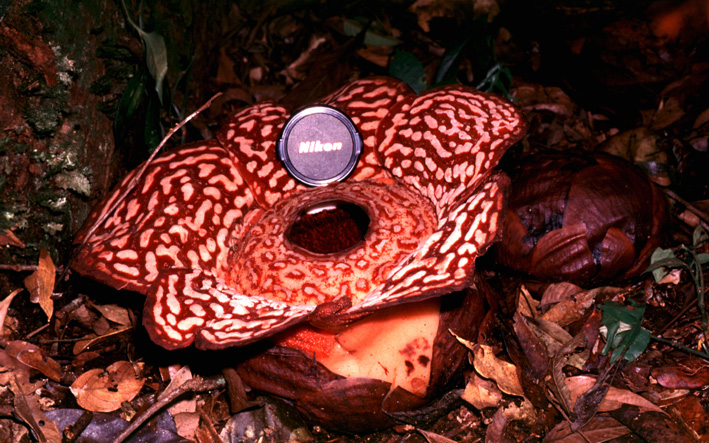Rafflesia

The giant flower of Rafflesia pricei, a parasitic flowering plant. Rafflesia is one of the most extraordinary of nonphotosynthetic parasitic plants, existing for most of its life as a threadlike infection strand within a photosynthetic host (Tetrastigma, a vine in the grape family). When mature, a large bud (back right of photo) bursts forth from the host and opens to produce a huge flower that smells like carrion. The plant produces no typical roots, stems, or leaves, but does produce flowers and seeds. In the past, our lab has studied genome evolution in Rafflesia and used molecular phylogenies to determine how parasitism may have originated in this amazing group. (Photograph by Todd Barkman.)